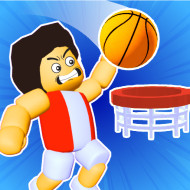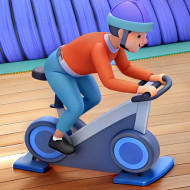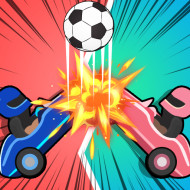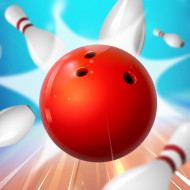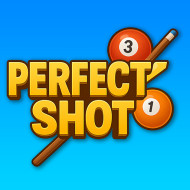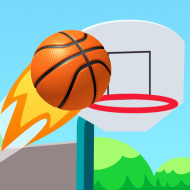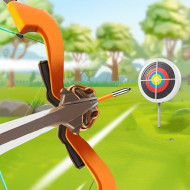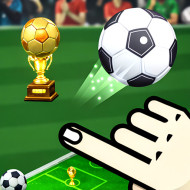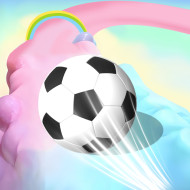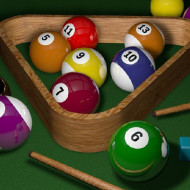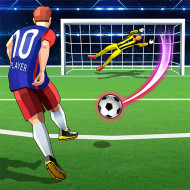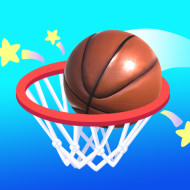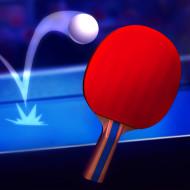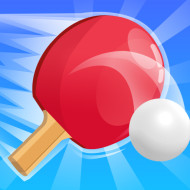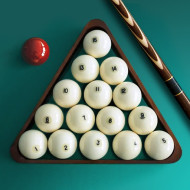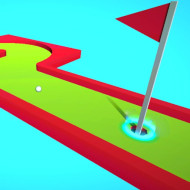Tennis Physics
Tennis Physics is a fun sports and stickman game with really funny pixel graphics. In a thrilling doubles match, you have to hit the ball with your bat as many times as possible into the other player's court to score as many goals as you can.
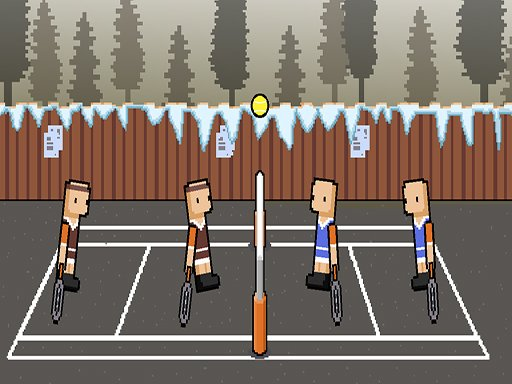
How to Play Tennis Physics
Are you ready to show how good you are at sports for good? You can enjoy your favorite sport while playing with one or two other individuals. The first team to five points wins the game.
Controls
- Player 1: "W"; Player 2: "UP ARROW KEY"
Tips and Tricks Tennis Physics
If you understand the science behind tennis, you can make your game a lot better. Here are some useful hints and tips:
Get a Good Grip
- Type of Grip: Try out the Eastern, Western, and Continental grips to see how they change your spin and control.
- Consistency: Keep your grip the same to make your shots more accurate and powerful.
Make your swing better
- Follow Through: To get the most power and spin, make sure you do a full follow-through.
- Angle of Racket: You can change the ball's path and spin by changing the angle of your racket face.
Make good use of spin
- Topspin: To keep the ball in play and make it bounce higher, which makes it harder for your opponent to return, use topspin.
- Backspin: For drop shots that stay low and are hard to reach, use backspin.
Pay attention
- To your footwork and positioning: always stand in a way that lets you hit the ball hard.
- Movement Side to Side: Work on making quick movements side to side to improve your game coverage.
Know how the court surfaces work
- Change the way you play: Change how you play depending on the condition of the court. For example, play aggressively on hard courts and slowly on clay courts.
- Awareness of Bounce: Watch how the ball bounces off of different surfaces to guess what it will do next.
Play around with string tension
- More control is gained with higher tension, and more power is gained with lower tension. Test different setups to find the best one for you.
- Type of String: Spin and feel can be changed by using different types of strings, such as natural gut, nylon, or synthetic.Look over your shots.
- Video Analysis: Watch and listen to recordings of your practice sessions to look at your skill and find ways to make it better.
- Comments Loop: To improve your understanding of how shots work, get comments from coaches or other players.
Get good at throwing the ball consistently
- To serve, you need to be able to consistently toss the ball. Get better at throwing the ball to the same height and spot every time.
- Changes in Angle: Play around with the angle of your toss to see what works best for your serve.
Make the most of physics
- Angle of Attack: Hit the ball from different directions to cause your opponent to have trouble with their shots.
- Know the difference between power and control and when to use power (like during a serve) and when to use control (like during a rally).
Keep your body in shape
- Strength and Conditioning: To improve your general performance, stick to a fitness plan that includes strength, speed, and flexibility training.
- Injury Prevention: To lower the risk of getting hurt, pay attention to physics.
Features Tennis Physics
Tennis physics is the study of many things that affect the game. These are some important points:
Analysis of Trajectories
- The curved path of the ball helps players guess where it will land in projectile motion.
- Angle of Impact: The ball's path and distance are affected by the angle at which it is hit.
How Spin Works
- Different kinds of spin: Topspin makes the ball dip quickly, which lets it bounce higher.
- Spins the ball backwards, which can make it stay low after it bounces.
- Sidespin changes the way the ball moves laterally, making it bend.
- Third, force and speed
- Newton's Laws of Motion: Knowing how forces affect the ball when it hits something and when it moves helps players improve their swings.
- You can change how fast the ball moves by changing how fast you swing and how you hit the ball.
How rackets work
- Finding the Sweet Spot: Hitting the ball on the sweet spot transfers the most energy and causes the fewest tremors.
- Effects of String Tension: The racket's response and ability to control the ball change as the tension changes.
- Five. Energy Transfer: Kinetic and Potential Energy: Looking at how energy moves from the player to the stick and then to the ball.
- Elasticity of Strings: The speed of the ball is affected by how much the racket strings can stretch and bounce back.
Interactions on the Surface
- Characteristics of the Bounce: The ball bounces and acts differently on grass, clay, and hard courts.
- Frictional forces: The way the ball and court surface rub against each other affects its speed and spin.
Biomechanics of the player
- Movement Efficiency: To improve their strength and steadiness, players must use the right biomechanics.
- Footwork and Positioning: To reach and return shots, you need to be able to move in the right way.
Things in the environment
- Altitude and Air Density: When you're higher up, the air resistance goes down, which lets the ball move faster.
- Effects of Wind: When playing outside, wind can change the path of the ball.
Are you prepared to demonstrate your athletic abilities definitively? Take advantage of the 1- or 2-player options and prepare to enjoy your favorite sport while having a blast. The winning team will be the first to score five points. Good luck...
Discuss Tennis Physics
New games
